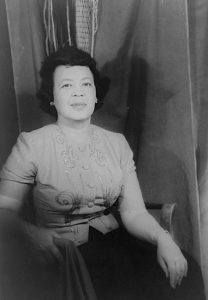Margaret Bonds – Mastering The Movement
Words by Okara Imani
The concept of arts activism can be a bit ambiguous and vast. Being the child of a talented teaching artist and a contemporary of the Harlem Renaissance, Margaret Bonds took a more anthropological route to advocate for those impacted from then on. She grew up in a creative, community-centered home in 1920’s Chicago, visited by prolific writers and artists of the time. You couldn’t tell me nothin’ if I’d been lodging and dialoguing and learning with a young Florence Price in college! Ahem, but aside from that, such a revolving door into a meeting of great minds, with all young Margaret’s talents and surrounding social climate lends itself to very intentional activism, one that utilizes her artform to clarify and amplify the voice of the people with which she shared so much of her Black experience. Understanding this, you can appreciate that Margaret Bonds was a sort of Maestra of THEE movement, of the Civil Rights Era. In her Montgomery Variations, she deftly documents pivotal milestones and events throughout Martin Luther King Jr’s Civil Rights Era, specifically in Montgomery, Alabama. Not unlike textbook classical predecessors, such as Bach, Bonds builds variations upon a tune deeply rooted in the African American experience: a spiritual often called Walk with Me, Lord.

But all this made me ponder a sort of chicken-before-the-egg anthropology concept: art imitating life imitating art. With work like Bonds’ Montgomery Variations, it is glaringly apparent how massive moments in history impact the way we express ourselves if we have any social consciousness or even awareness. The Fourth movement illustrates One Sunday, in the South, with the gallant and robust clamor and din almost as sardonically illustrated as by one, Billie Holiday in her standard Strange Fruit. Immediately followed by Lament, a brutally sorrowful outcry at the bombing of 16th Baptist Church in Montgomery, Alabama that killed 4 black girls. History impacting art, art imitating life, history writing music.
Now, consider the very real phenomenon of history changing its tune depending on the teller. I propose that works such as the Montgomery Variations — with such direct connection to lived experience and deeply rooted social context — have the power and capacity to re-shape or color historical moments and re-center the peoples impacted by them by intentionally shifting the perspective lens by which we view the events themselves. Art impacting history, life imitating art, music writing history. So, ponder: which came first, the chicken… or the egg?
Listen to this episode of the Melanated Moments in Classical Music podcast.







Leave a Reply